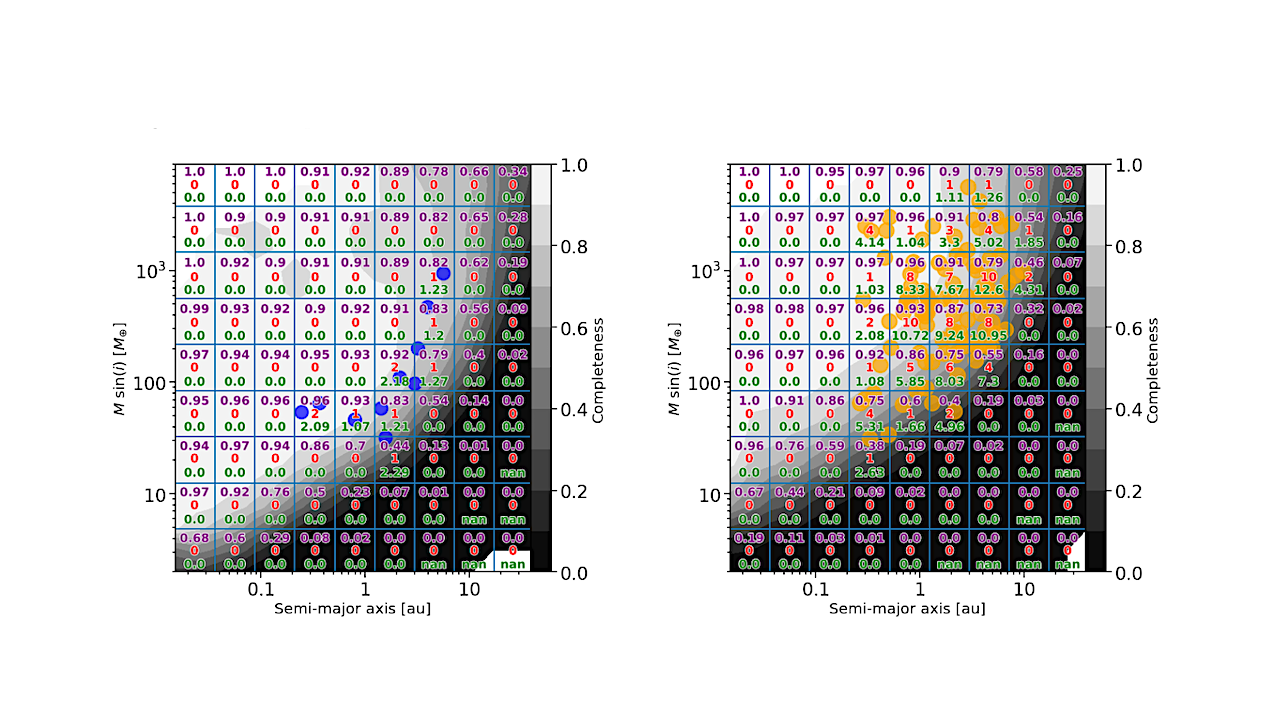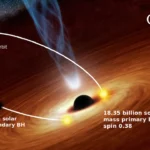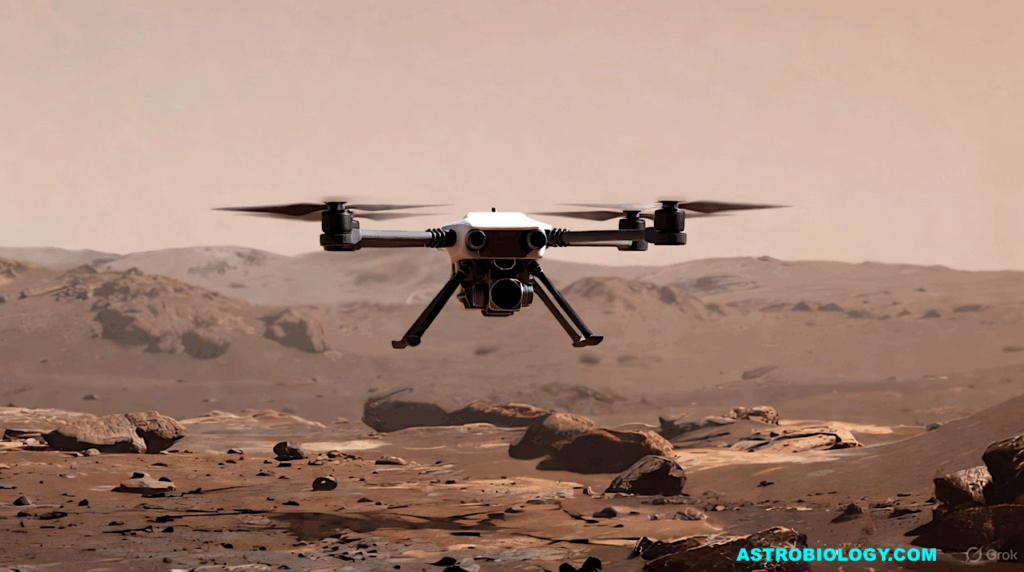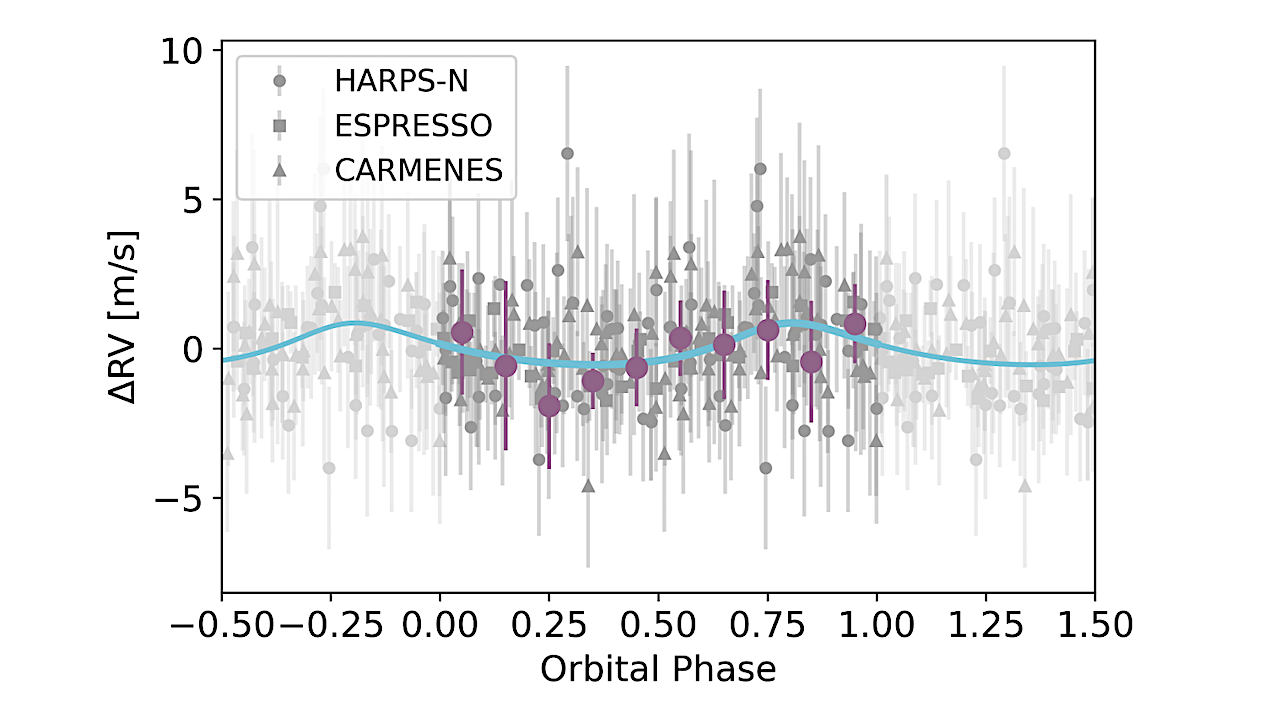Now Reading: Saturns, But Not Super-Jupiters, Occur More Frequently In The Presence Of Inner Super-Earths
-
01
Saturns, But Not Super-Jupiters, Occur More Frequently In The Presence Of Inner Super-Earths
Saturns, But Not Super-Jupiters, Occur More Frequently In The Presence Of Inner Super-Earths


Average completeness (purple), number of planets before correction (red) and number of planets after correction (green) inside each bin (blue lines). Blue and orange circles represent cold Jupiters with and without inner super-Earth companions respectively. The contours on the left panel correspond to detection completeness of stars from the sample hosting at least one super-Earth. On the right panel, the contours correspond to detection completeness of stars that do not host super-Earths. Note that dividing the red number by the purple number gives an approximation of the green number. — astro-ph.EP
Studies from recent years have reached different conclusions regarding how frequently super-Earths are accompanied by long period giant planets and vice versa. This relation has been predicted to be mass dependent by planet formation models.
We investigate that as the origin of the discrepancy using a radial velocity sample: the California Legacy Survey. We perform detection completeness corrections in order to discard detection bias as a possible explanation to our results. After bias corrections, we find that cold Jupiters are 5.65 times more massive when not in company of an inner super-Earth, while super-Earths are not significantly more massive while in company of an outer giant planet.
We also report an occurrence enhancement for Saturns (median projected mass of 0.6MJ) while in presence of a super-Earth by a factor of 4, and for super-Earths in presence of Saturns by the same factor. This positive correlation disappears for super-Jupiters (median projected mass of 3.1MJ).
These results show that while cold Jupiters are generally accompanied by inner super-Earths, this does not hold for the largest giant planets, such as those that will be discovered by Gaia, which will likely not be accompanied by transiting planets. The mass dependence, in combination with different detection limits of different surveys, may explain the discrepancies concerning occurrence relations between cold Jupiters and super-Earths.
Etienne Lefevre-Forjan, Gijs D. Mulders
Comments: 9 pages, 7 figures, accepted by ApJ
Subjects: Earth and Planetary Astrophysics (astro-ph.EP)
Cite as: arXiv:2506.21204 [astro-ph.EP] (or arXiv:2506.21204v1 [astro-ph.EP] for this version)
https://doi.org/10.48550/arXiv.2506.21204
Focus to learn more
Submission history
From: Etienne Lefèvre-Forján
[v1] Thu, 26 Jun 2025 13:01:27 UTC (1,080 KB)
https://arxiv.org/abs/2506.21204
Astrobiology,
Stay Informed With the Latest & Most Important News
Previous Post
Next Post
-
 01From Polymerization-Enabled Folding and Assembly to Chemical Evolution: Key Processes for Emergence of Functional Polymers in the Origin of Life
01From Polymerization-Enabled Folding and Assembly to Chemical Evolution: Key Processes for Emergence of Functional Polymers in the Origin of Life -
 02Panasonic Leica Summilux DG 15mm f/1.7 ASPH review
02Panasonic Leica Summilux DG 15mm f/1.7 ASPH review -
 03How New NASA, India Earth Satellite NISAR Will See Earth
03How New NASA, India Earth Satellite NISAR Will See Earth -
 04And Thus Begins A New Year For Life On Earth
04And Thus Begins A New Year For Life On Earth -
 05Astronomy Activation Ambassadors: A New Era
05Astronomy Activation Ambassadors: A New Era -
06SpaceX launch surge helps set new global launch record in 2024
-
 07Two Black Holes Observed Circling Each Other for the First Time
07Two Black Holes Observed Circling Each Other for the First Time





















